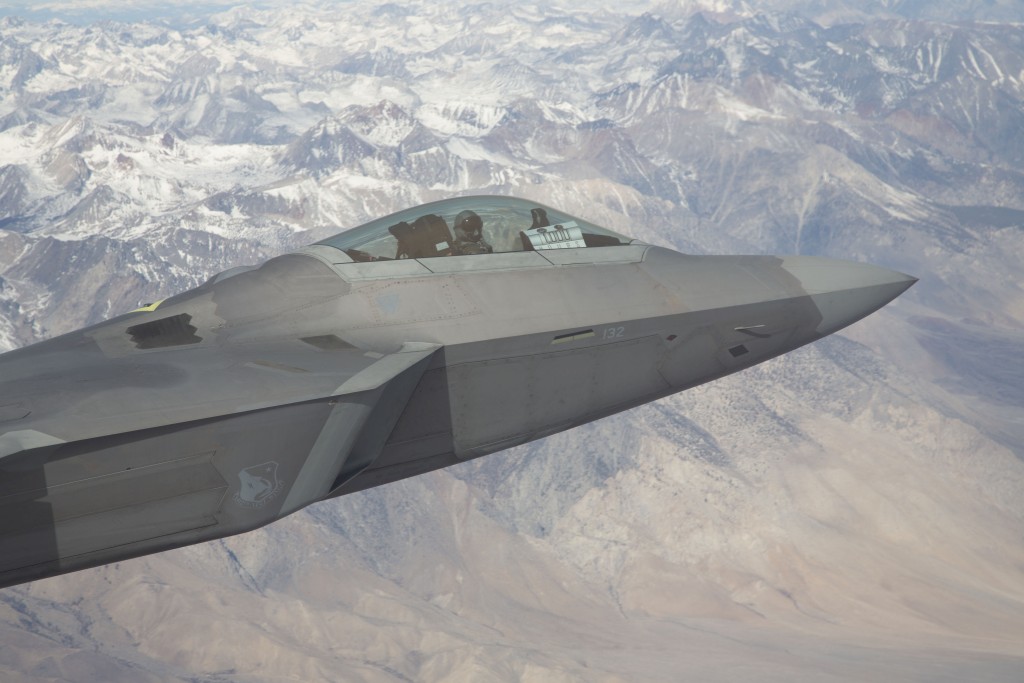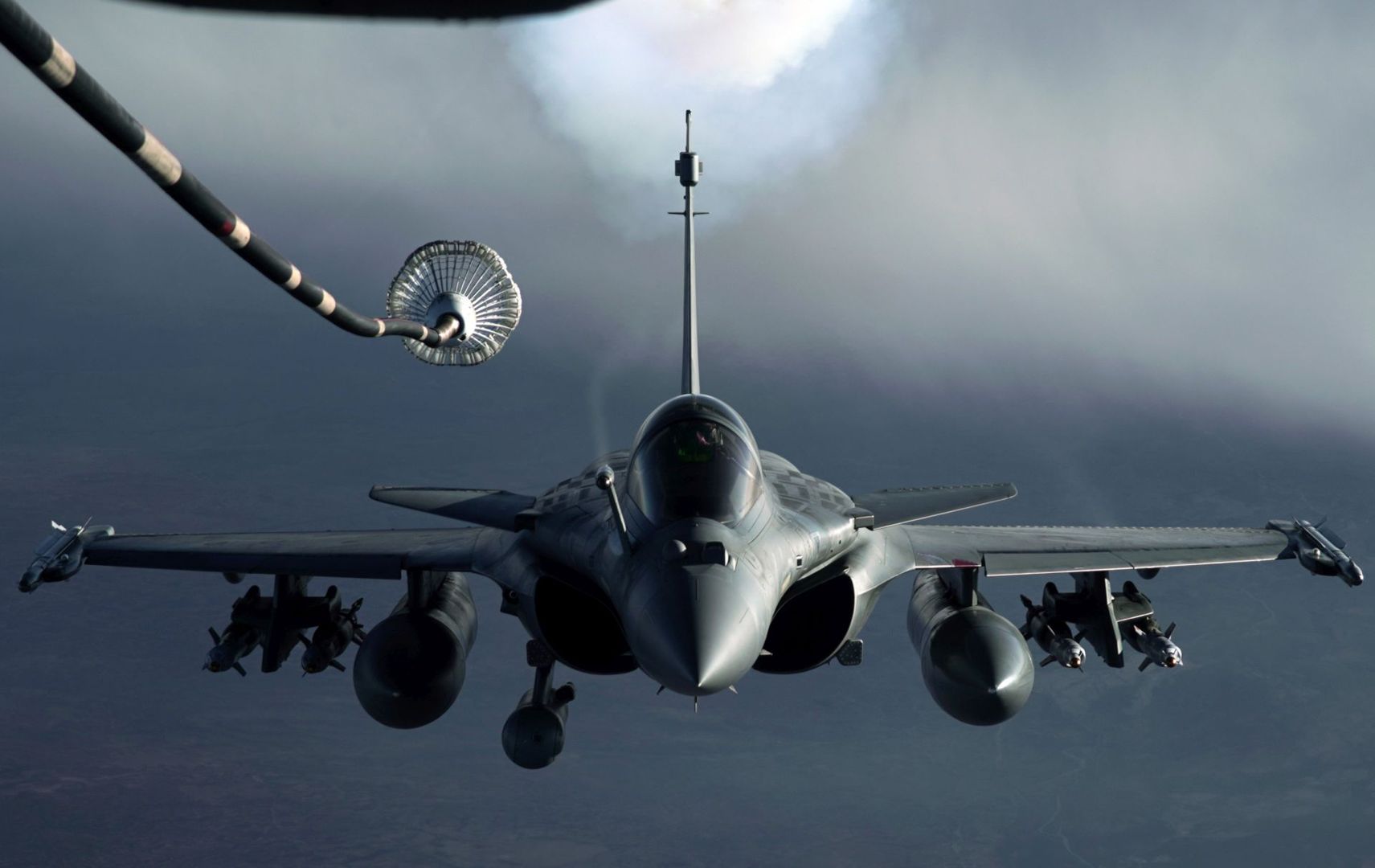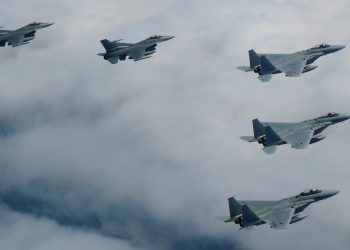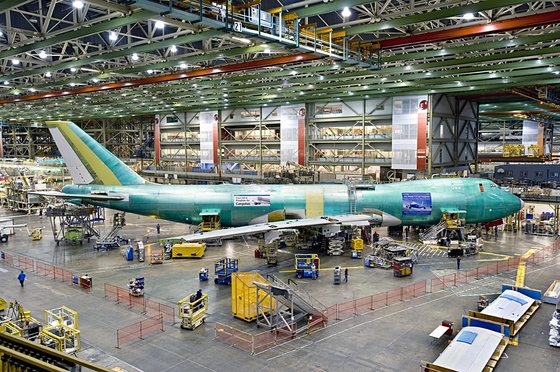EDWARDS AIR FORCE BASE: Four-year-old Steve Rainey sat on the hood of his father’s car at a local airshow watching the small airplanes and helicopters at the airport. When the Thunderbirds in their F-100s sped by, Rainey fell off the car, looked up at the sky and thought, “I’ve got to do that.”
Jan. 22, the now chief test pilot flew his 1,000th hour in an F-22 Raptor. Rainey is the second person at Edwards to log 1,000 hours in the Raptor. He flew his milestone flight in tail number 4132, the flight sciences aircraft. When he landed, he was greeted by his wife and the entire F-22 Combined Test Force who were waiting to hose him down – a tradition for such occasions.
“All my life I wanted to fly,” said Rainey.
Even as a toddler, Rainey remembers watching Alan Shepard’s Mercury Redstone rocket launch at his grandmother’s house.
“My mother told me this was an important historical event and I was immediately hooked on aerospace and being a pilot.”
Rainey had been given opportunities to ride in airplanes as a child, but was finally able to start logging his own hours after joining the Air Force. He graduated from the Air Force Academy in 1980 and later graduated the U.S. Navy Test Pilot School as an Air Force exchange officer.
From there, Rainey was stationed at Edwards AFB where he flew F-4s and F-16s. After flying at historic Test Operations for six months he was made a flight commander at the F-16 Combined Test Force.
At the time, Lockheed Martin, Boeing and General Dynamics had secured a contract to design and build the advanced tactical fighter that is now the F-22. Rainey was assigned as the F-22 Test Program Manager at Wright Patterson AFB, Ohio, for the years leading up to critical design review. In 1996 he was assigned as the first F-22 Combined Test Force (411th Flight Test Squadron) operations officer, and when the time came to fly, he was scheduled for the third flight out of Lockheed Martin Marietta, Ga.
The first flight was flawless, but during the second the instrumentation system failed. Several structural modifications would have to be done before serious flight test could be conducted at Edwards. In September 1997 the decision was made to complete the required structural modifications and ship the first F-22 to Edwards.
“We brought the airplane out here on a C-5,” said Rainey. “It came in a bunch of boxes, literally. Little note, ‘some assembly required.'”
They rebuilt Ship One, performed all the ground tests and on May 17, 1998, Rainey flew the first flight at Edwards AFB.
“I was the first Air Force pilot to fly the airplane in ’98 and flew the first flight here, which was the third flight of the airplane.”
After serving as the 411th Flight Test Squadron commander, Rainey retired from the Air Force in 2000 and spent the next three years flying for commercial airlines.
Towards the end of his airline days, Rainey remembers sitting at the end of a runway in Albuquerque, N.M., that was shared with Kirtland Air Force Base. A four-ship formation of F-16s was cleared on to the runway ahead of them and Rainey missed the radio call that cleared the airliner to hold.
His captain told him as they prepared to climb, ‘you look like you lost your best friend.’
Within a week, he heard that Edwards was looking for civilian F-16 pilots. Rainey got the job and about two years after that was hired as the F-22 test pilot for Boeing.
“I was back home at the CTF,” said Rainey. “I was there to help finish up the Engineering, Manufacturing and Development phase and see it go operational, so that was really cool.”
Rainey was Boeing’s F-22 test pilot until January 2014 when Lockheed Martin hired him to be the F-22 chief test pilot.
“I’ve been very fortunate and I’ve been very lucky,” said Rainey. “I love what I do and I never want to stop doing it.”
Rainey views the F-22 as absolutely incredible and totally revolutionary.
“People misconstrue stopping production with cancelling the program. The program is not cancelled, it’s going to be there to do its job like no other airplane ever has. To date, there is still absolutely nothing that compares to the F-22; nothing in the world.”
So what makes this pilot so crazy about the F-22? First, it’s stealthy, “like the next generation from the F-117 and B-2.” It also super cruises, while other fourth generation fighters have to use the afterburner to go supersonic.
“You’re burning an incredible amount of fuel when you’re using the afterburner. It shortens the mission duration…with the Raptor you can go supersonic even at sea level without the afterburners. At design altitudes we are talking 1.6+Mach. This means imparting more energy to the weapons we employ allowing longer engagement ranges.”
The F-22 is the first fifth generation fighter and is equipped with a highly integrated, sensor-fused avionics system. Fourth generation fighters require the pilot to control the sensors and interpret the data collected.
“In other words, in fourth generation fighters the pilot is required to do mental gymnastics to determine the intercept geometry and then use other sensors in an attempt to determine the aircraft’s identity. The Raptor has two supercomputers in the airplane that task all the sensors. Some of those sensors allow the pilot to see things 360 degrees around the airplane. The supercomputers fuse the information and deliver it in a simple format to the pilot.”
The F-22 is also equipped with incredible capability in a dog fight. There is no angle of attack limit and it can be maneuvered while in a stalled condition or “post-stall maneuvering.”
“That means you’re flying with the wings stalled, and still, I can point my nose any angle I want to. Incredible capability. All of that means there’s just nobody out there that can touch us. This airplane is absolutely revolutionary and that capability we built years ago still is revolutionary today.”
To keep the aircraft current, the F-22 program continues to add improvements such as Updates, which improve current capabilities, and Increments, which add new capability to the aircraft.
“Increment 3.1 is being fielded now and includes true global strike and ‘knock the door down’ capability with the addition of a Synthetic Aperture Radar and small diameter bombs. The CTF has just completed work on the next capability, Increment 3.2A, with new air-to-air capabilities and is currently working on Increment 3.2B with even more capability increases as well as Update 5. We are currently in the planning stages for Update 6 and the next incremental capability increase – ‘Tactical Mandates.'”
There are 195 F-22s that have been delivered to the U.S. government and 187 of those are operationally coded. The remainder are used for test or training.
“Very few pilots ever have the opportunity to work on a program since before critical design review, through the initial developmental test phase and into the sustainment phase. I am very fortunate to have that opportunity – to work on this fabulous machine and to work with a masterful team of true professionals.”
Rainey is thankful for the entire F-22 team and in particular the F-22 CTF that he has worked with for all these years.
“Wow, what a group of people! I have never ever had an opportunity to work with a group of people like this before, they are total professionals that truly believe in this airplane and what it brings to our great nation. I want to thank everyone for making this dream come true for me!”









